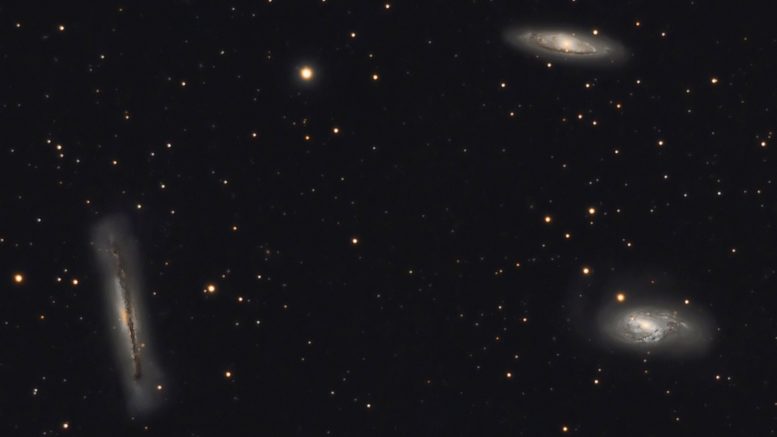Spring can always be a tough time in the Pacific Northwest with cold temperatures, cloudy and wet weather, and the potential for some light snow thrown in to make things interesting. With the shorter days and longer nights, there is certainly more time during clear nights to go outside and view the sky! However, with the limited number of opportunities, we will provide our recommendations for the Top 5 Most Reliable Spring Astronomical targets! Note, that this goes from the technical dates for spring start at the Spring Equinox and end at the Summer Equinox. Some might consider events before the Spring Equinox as part of Spring, but that is technically part of Winter.
These are not an exhaustive list, but rather a starting point for those getting started looking at the nigh sky and provide a challenge for astronomers at every level of observing. We have taken the time to include in this list objects for those who are utilizing a wide variety of gear, whether it be the naked eye, binoculars, telescopes, and astrophotography. If you are looking for a more advanced list of some summer astrophotography targets or astrophotography basics or unique astronomy sites, check out the resources that we have provided.
- The Beehive Cluster (M44) lies within the dim constellation of Cancer (The Crab), which currently is located about one-third of the way up above the western horizon as darkness falls. Contains one of the brightest globular clusters in the sky, this cluster appears to the eye as a fuzzy patch of light, although, under exceptionally clear and dark skies. Those with better-than-average vision can almost resolve the cluster using just their eyes. Binoculars will reveal the cluster’s stellar nature, and good binoculars and low-power telescopes will see the cluster in its fully glory. Under dark skies, the Beehive Cluster looks like a small nebulous object to the naked eye; as known since ancient times
- Algieba is located in the curve or the blade of the Sickle of Leo, which is halfway up in the west-southwest sky at nightfall, and appears as a single star to the naked eye. Using a 4 or 6 inch telescope will clearly show Algieba as a double star. There is the opportunity to view the double star during Twilight or bright moonlight to to reveal the contrasting colors; one star has been said to be greenish, the other a delicate yellow. Some have reported seeing different colors and hues including but not limited to pale yellow; orange; reddish and golden yellow; and pale red and white.
- Messier 3, which is a globular cluster of stars in the northern constellation of Canes Venatici, is a very beautiful globular cluster. It is located roughly midway between the brilliant orange star Arcturus and the third-magnitude star Cor Caroli in the constellation of Canes Venatici and is currently soaring high in the south at around 10 p.m. local daylight time. In a good pair of binoculars, M3 looks like a fuzzy sixth-magnitude star; however, a small telescope will have M3 appear as a circular, nebulous object. The outer parts can be resolved into stars with a 4-inch telescope, with an 8-inch telescope allowing the viewer to view all the objects.
- The Leo Triplet is a series of galaxies that provides a great view and is easy to find. Located on the ecliptic, these three galaxies that form the Leo Triplet, M65, M66, and NGC 3628, are located in the Leo constellation. This makes the Triplet very close to the ecliptic and very easy to find by a Telescope, DSLR, or Binoculars. These three galaxies can be seen in virtually any telescope and even in a good pair of binoculars. These are going to be the sky for the Spring season, but as the Spring ends and summer is near, these galaxies will get closer and closer to the horizon.
- Arcturus is fourth brightest star in the entire nights sky and part of the Spring Triangle. It is worth noting that Arcturus is so bright that it is the brightest in the northern celestial hemisphere, therefore, it is a great sight for viewing in any method. It is a great way to help astronomers of any level to help learn their away around the sky.
What are your favorite and top spring astronomical targets?? Lets us know!

Be the first to comment on "Top 5 Most Reliable Spring Astronomical Targets"